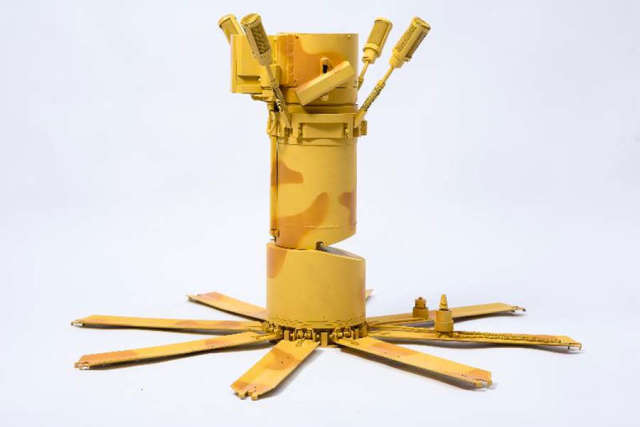Military expert Igor Korotchenko told how the "jumping mine" PTKM-1R works
During the special operation in Ukraine, many samples of Russian weapons and ammunition are being tested. One of these novelties was the anti-wing anti-tank mine PTKM-1R. Its use made it possible to disrupt the AFU counteroffensive in the Kherson direction. Such mines, according to the Russian military department, destroyed two enemy armored groups. How PTKM-1R works - in the material "Gazeta.Ru».
Unlike other anti-tank mines, the PTKM-1R does not hit the equipment by undermining the chassis, but strikes the most unprotected and weakly armored part of the combat vehicle - its roof, hence the addition in the name "anti-roof". This development of the Nizhny Novgorod Plant named after G.I. Petrovsky became officially known in 2018, and serial production of "jumping mines" for the Armed Forces of the Russian Federation began in 2021.
"Like any other anti-tank mine, the PTKM-1R is "sitting in ambush" - where it was installed by sappers, on the likely path of enemy armored vehicles. However, its task is not to be under the tank's caterpillar and make an explosion, but to detect and identify heavy equipment from a distance of 250 meters, wait for its approach and defeat it from a distance of 50 meters. The firing of a combat element with an explosive mass of 2.8 kilograms from a transport and launch container is carried out along a ballistic trajectory. The charge rises into the air and attacks the target, leaving no chance for maneuvering and evading defeat. The APU tanks simply did not expect that a mine could come from above," he told the newspaper.Ru" member of the Board of Military Experts Sergey Belousov.
The expert also noted that the PTKM-1R mine can be called "smart", it can "listen" and recognize the target, intelligently choosing its "victim" - with the parameters laid, the mine will not react to the car, but will wait for a tank or an IFV.
"This is achieved due to acoustic and seismic sensors, which are equipped with a launch container.
Belousov added.
The editor of the magazine "National Defense" Igor Korotchenko told "The newspaper.Ru", that even several PTKK-1s can block significant areas of terrain for the movement of enemy equipment.
"Among the advantages of the new mine is its ability to control a large area. With the deployment of several ammunition, it is possible to block a large area on the route of armored vehicles. Especially hidden areas along the route of enemy armored vehicles - along country roads and in wooded areas. The probability of her defeat will be extremely high. This mine contains elements of "smart electronics", has the presence of combined means of detecting and identifying the target, which allows you to choose exactly the object that is embedded in its program. This is such a hidden hunter for tanks, unlike fixed mines, where the push principle of triggering the fuse is used," Igor Korotchenko said.
Military expert Vladislav Shurygin agrees with this point of view.
"The feature of the new PTKM-1R complex is the possibility of its installation not on the route of armored columns, but a little to the side, where they are more difficult to detect, especially if the enemy does not expect such an attack and does not take security measures. With the proper installation of new "jumping" mines and their disguise, it is possible to achieve maximum defeat of enemy heavy equipment. The Ukrainian army, apparently, did not know about the existence of such Russian mines capable of attacking from a distance of tens of meters," he told the newspaper.Ru" Shurygin.
The analogue of the Russian PTKM-1R can be called the American mine M93 Hornet, which has been produced since 1990
"The American mine is capable of detecting targets from a distance of 100 meters. It also uses seismic and acoustic sensors that track and identify targets near their installation site. The ammunition, which weighs 450 grams, similarly attacks armored vehicles from top to bottom along a steep trajectory. Thus, the Russian jumping mine is twice as effective in range and five times more powerful," concluded Sergey Belousov.
Victor Sokirko

